Travels through Tang
As we visit these places(http://reyndr.com/group/2543) in Tang we are following in the footsteps of the people who have gone before us, family, friends, neighbours and strangers. Friend and foe.
Read this guide at the café, hotel or at home. And when you get to the place ‘be there’. Meet, chat and visit. Think of those who have gone before us and reflect on our own contribution to our shared heritage.
Background
This blog post has been produced from research and digital cultural heritage recording by community members following training funded by Westmeath Community Development in March 2014.
Places to Visit
The Old National School
The Old National School in Tang served as a school from 1858 to 1965. Prior to this local children attended 'hedge schools' including one with a teacher named Dooner. The new school was single storey and built on land donated by John Dawson. Michael McElynn was the first teacher in the school. It is said the school was built by a Mr Bracken who may also have built the adjacent Catholic church. In 1878 the school was extended upwards by local carpenters the Wards. Mr Tom Cashell was made principal in 1934 and there are some school records in existence from this date onwards. The school was moved across in road in 1965 and the building has recently been refurbished as a thriving community centre.
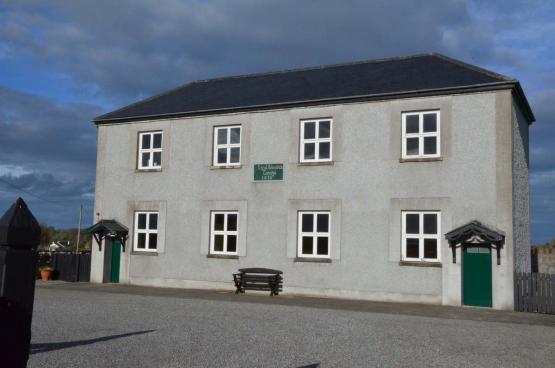
Church of the Immaculate Conception
One of three churches in the parish of Drumraney & Tang it has a separate belfry which once sat within a medieval enclosure visible alongside the church.
There are stories that the church bell was rung during times of evictions in the parish. As the bell dates to 1873 we can picture the Land Agitation of the 1870s being accompanied by these bell sounds. Engraved on the bell are the following details 'parish bell of Noughville- J. Murphy Founder, Dublin 1873 & M Byrnes patent.
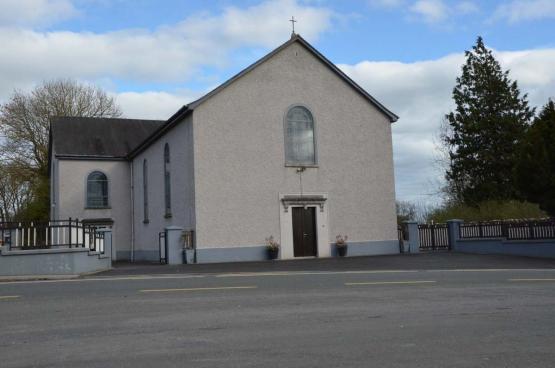
Lisdisson Mass Rock
There is a Mass rock in the townland of Lisdisson on top of a low hill.
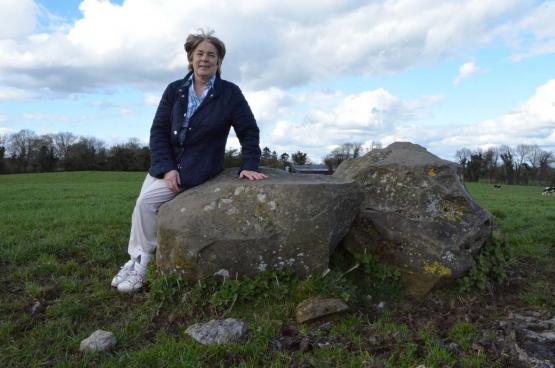
Vonnie Fallon’s recently published book on the history of Tang contains this story as told to her by her late father Joe Conlon. This mass rock was first situated in low lying land (in Moran’s/ Moore’s bog) and when the present Catholic church was consecrated in the 1850s the mass rock was moved to a position of prominence - the effort in moving the stones reflecting the revolution which occurred with Catholic Emancipation.
Templeavalley Graveyard
Templeavalley graveyard in Gaelic means ‘the church of the routeway’ - teampall a bhealaigh’. It sits beside the ??? river and while its character is a mixture of old and new it’s origins are ancient. Following a recent extension Templeavaley serves as main graveyard for this side of the parish.
The ornamental cross above once sat atop St. Catherine’s Catholic church and was moved here following a recnet refurbishment in order to physically represent the link between both places.
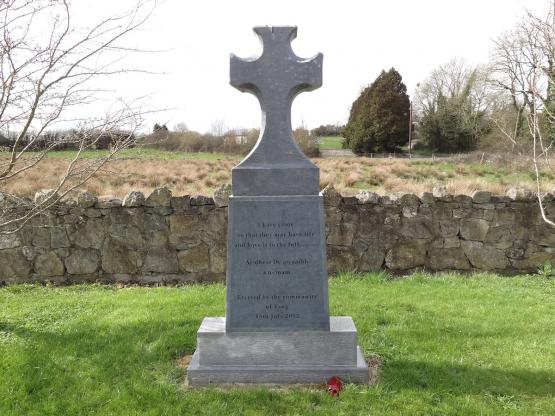
Noughaval Graveyard
The graveyard of the ‘new settlement ‘- this graveyard is the latest manifestation of a very long running human use of this pocket of land. Pronounced ‘No-hill’ or ‘No-Val’ the graveyard is situated on dry sloping land with natural fresh watering springing to the surface at the base of the slope.
Through time, shelter and immediate access to clean water has been a key element in deciding where to settle and it is likely an Early Christian community set-up a settlement here. No doubt on land which had been occupied and farmed since prehistoric times. This ‘new settlement’ ultimately became a church and graveyard although it may well have been a working farm for some of it’s Christian use. Do not let the stone grave memorials and the bare walls of the ruined church limit your imagination.
As for the church picture it thatched, rendered in lime mortar and resplendant in white wash. That is probably how it lookedin its prime.
Put on your waterproof jacket and leggings and explore Noughaval historic graveyard. Pick a sunny morning when the sun costs a shadow across the mostly east facing headstones.
If you have family from this parish examine each gravestone for the surnames carved in stone. If a stranger to these parts examine the stonecutter’s craft.
- Can you find the two headstones which show Christ crucified on the cross?
- How many headstones can you see where the letter is carved ‘in relief’ rather than incised into the stone?
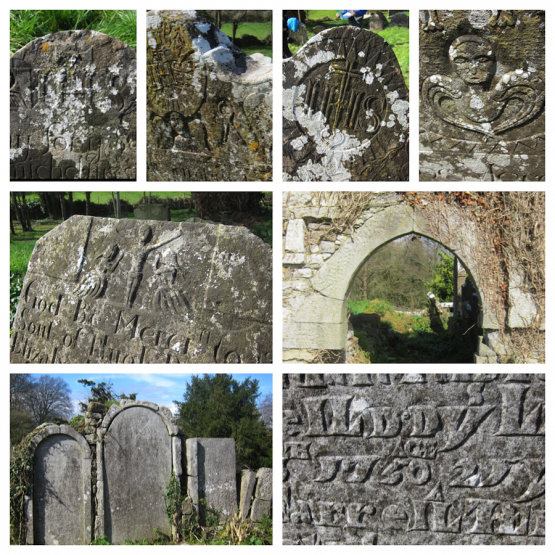
Ardnacrany North Graveyard
The monastery of Ardnacraney was founded in the fourteenth century for the Carmelite Friars by Robert Dillon, Lord of Drumraney and Noughaval. Folklore has it that it was a splendid Abbey which had an eight feet panelled stained glass window at the gable of the church, and over the main alter a “Rose “ window devoted to St. John the Baptist.
The monastery is still remembered in the tradition of the faithful people and many local families are buried there even to this day. The monks were forced to move to Ballymore Abbey and then to Moate where they still remain and over the last century they kept a successful boarding school for boys. Again, folklore handed down tells us that there are two gold chalices still buried by the monks in Ardnacraney that have never been found. This tale is commonly encountered around the country particularly in reference to the impact of the Reformation or of the 17th century Cromwellian forces. The fact that is often encountered probably reflects the widespread problem of what to do with the church plate in times of duress.
Folklore also tells us the monks and local people had “blessed wells” to bless the livestock for farmers, indeed one such well still remains at Tully, The Pigeons and medals and old coins and relicts are left in thanksgiving. The people took the well water into their homes for blessings, especially in the spring time for the Bealtaine festival when the whitethorn’s in bloom.
This ancient graveyard has a long and complex history but one factor has remained constant. The modern headstones seen here reflect the fact that people have been buried on this site for a very long time - perhaps for a 1000 years and more. Imagine - most years with a burial - marking the passing of the generations of the families of Tang and Dromraney. As each generation leaves its mark they are mixed in with the remains of previous generations.
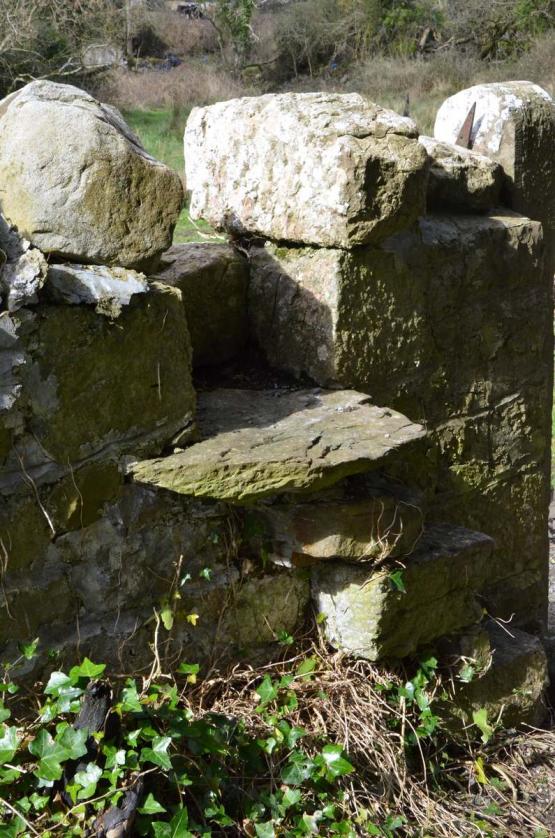
Public houses of Tang
Murrays of Maghera
A public house in Maghera townland with a long history. Proudly run as a shebeen and still a strong feature of local life for cards and craic.
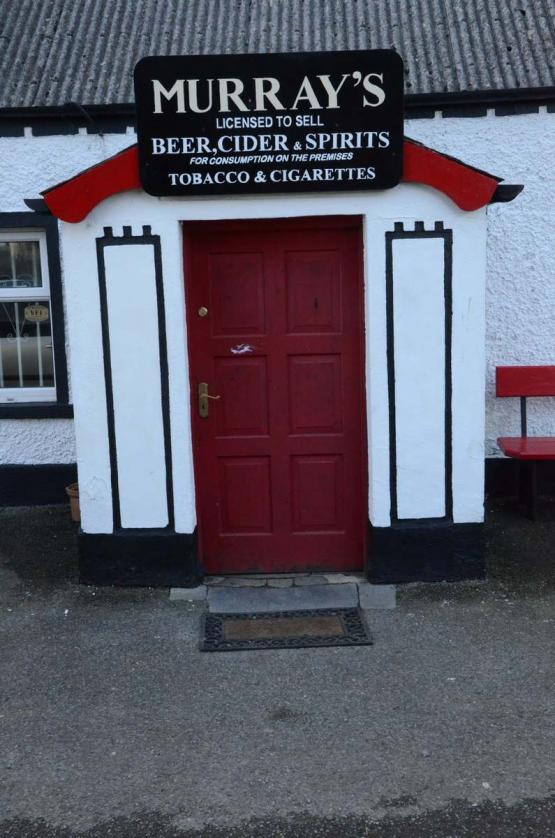
The Three Jolly Pigeons
The three chimneys of this house give us a clue to its function. Pub, shop and dwelling house. A chimney for each function and for each Pigeon.
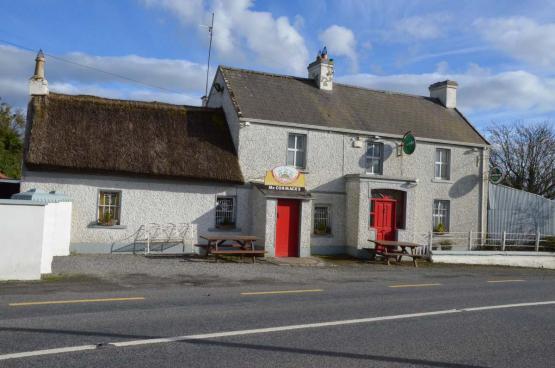
As you walk over the unusual mill stone threshold of the pub you are following in the footsteps of 18th century poet Oliver Goldsmith who held this house in high esteem. The porched entrance designed to leave the weather outside and make the interior even more snug.
Seamus McCormack the current proprietor recounts Goldsmith’s verse about the Three Jolly Pigeons and also about the key role of liquor in education.
Fitzpatrick’s Public House & Shop
At the corner of the Ballymore and Ballymahon Roads and closest to the nearby Catholic Church this public house and shop played a central role in this dispersed village.
Trades of Tang
Ben Lynn tells us he remembers this structure being used as a blacksmiths forge by the Ward family. Although a humble building it connects us to the Ward family whose skills ranged from making concrete and stone Celtic Crosses (found in Temeplavalley graveyard) to the extension of the Old National School. Carpenters, builders, monumental sculptors and blacksmiths the Wards played an important part in this Westmeath community.
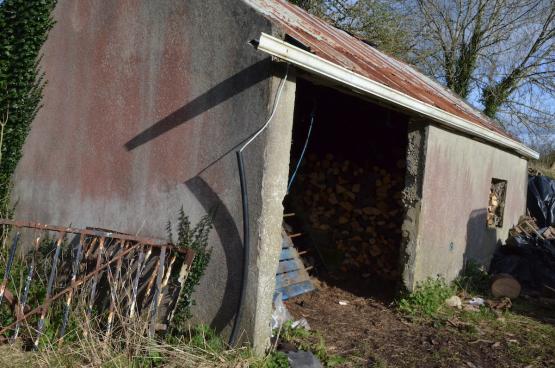
19th Century Windmill
A curious circular stone ruin opposite The Three Jolly Pigeons which was originally a windmill in the 19th century
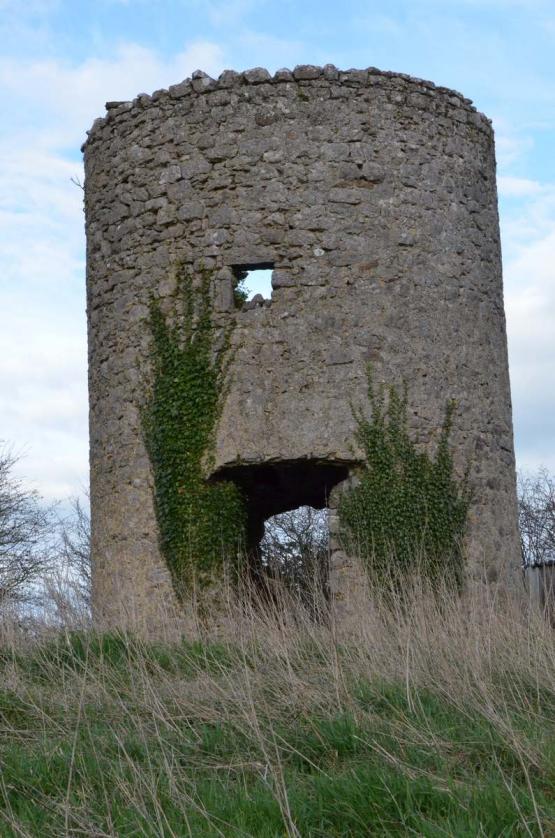
Families of Tang
Noughaval Townland
A key townland in the parish Noughaval can be pronounced ‘No-val’ or ‘No-hill’. The name means new-settlement and represents some medieval political shifts in the landscape. The historic focus of the townland is at Noughaval historic graveayrd which probably served as the parish centre where rents due on church lands were paid and where ancestral ties to the parish were solidified by being buried within the churchyard bounds.
The 1901 and 1911 national censuses give us a clear picture of the families living in this townland with # surnames present in 1901 and # in 1911. The political developments of the early 20th century are represented by the use of the Gaelic version of the surname in the 1911 census.
In both censuses there were no Protestant families living in the townland. All of the families who did live here made their living from the land/agriculture.
Watch as the local community continue this analysis of the other townlands in this parish.
